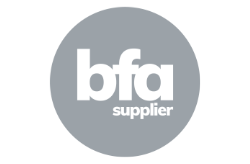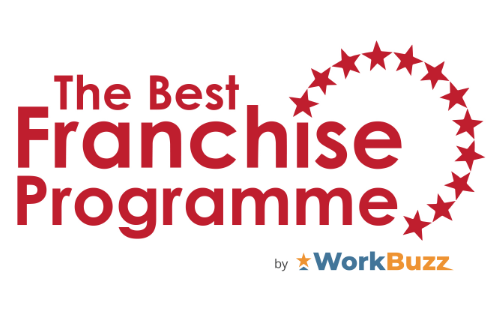As a franchisor, you don’t need baubles, The Pogues or a new gym membership to know when the calendar is ticking over to a new year – you can measure it by the bewildering number of calls and emails you’ll receive from advertisers looking to set you up on their sites. December and January herald a cacophony of noise from different marketing platforms, some of which are familiar alongside many that have seemingly come out of nowhere. In the past 12 months alone, there’s been no shortage of new franchise directories and services popping up, each of them claiming to be the biggest, best and fastest-growing – a particular bugbear of mine given that there’s no way of measuring such ridiculous statements. It can be overwhelming figuring out how to sort the wheat from the chaff and which channels are worth your time and money.
While print media and exhibitions are still an important part of the marketing mix for many, it’s the proliferation of websites that tends to confuse. The key to finding the right ones is to dig deeper than the sales spiel to find out what’s likely to work for you. So here are a few ways to do just that.
Research
Put yourself in your ideal prospect’s shoes. What terms might they use in an online search for a brighter future? Which directories or sites could they already be aware of, from franchising and business to parenting and others? If you can’t find a site on Google, chances are your prospects can’t either. Spend a little time googling the things you think they’d look for and see which directories are prominent in those searches. The top results – organic or paid for – will attract a healthy rate of new visitors, so it’s a good bet that those may be the ones worthy of further consideration. It doesn’t matter if someone’s claiming to have a database of 25,000 people waiting to hear from you if that list isn’t being continually updated with new eyeballs.
Then look around the sites and see which other brands are on them – are they reputable, well-known businesses? Are some of them seeking a similar demographic of franchisee to you? That gives you an indication of the likely quality of traffic. Consider also how long they’ve been established; in a highly competitive field, it takes time to build up a strong organic presence for franchise search terms. That doesn’t mean newer sites are necessarily out of the question – a good AdWords budget can go a long way – but they’ll need something that makes them stand out if they hope to generate long-term traffic and break the hegemony of the established directories out there.
Discuss
As an agency we have the advantage of experience, with considerable data from many different channels and brands from which to construct the right strategy for a franchisor; we know what works and what to avoid. But if you manage your marketing strategy in-house, don’t think you only have your own results and knowhow to lean on: get out to events and talk with other franchisors and professionals. What works for them won’t necessarily work for you – different channels and methods suit different franchises and there’s no one size fits all – but sharing ideas and experiences is one of franchising’s biggest strengths and one you should take advantage of to inform your decision-making.
In addition, talk to the people trying to sell you something. Challenge them. Ask for proof that they can deliver results. A media kit isn’t good enough: you want tangible results that have been achieved in the past or the reasons they are different to the competition. While they won’t share brand-specific results, they should be happy to verify things like average eshot open and click-through rates, typical monthly leads and so on.
Analyse
When you’ve determined the most likely candidates, run a short trial with one or a select few of them; don’t just sign up for 12 months and commit a chunk of budget to something before you know if it will work for your brand. Once live, keep a close eye on results. Analyse quality, not just quantity: monitor the proportion of people you’re able to contact, how many are progressing to meetings and further. If they send web traffic directly to you, then check your referral stats on Google Analytics. If results are poor, ask if there’s anything else the account manager can do for you without another huge monetary commitment. At the end of your campaign, you’ll have the numbers you need to make an informed decision on whether to commit further or look elsewhere, taking away the guesswork.
There is another consideration to this analysis. Common consensus in franchising is that the number of people applying through directory sites has been reducing for a while now but part of that reflects the change in how we all use the internet compared to a few years ago. If you were looking for a business opportunity and found something interesting on a directory, would you click the ‘send me more information’ button or would you go and find the company’s website to research further? The reality is your prospects will do both, so if you’ve enjoyed a spike in enquiries through your own website while running a new campaign or two in directories, factor that in to your thinking. Visibility matters: the point at which a prospect first heard of your franchise is not necessarily the same as their point of enquiry.
Finally, it’s critical to remember that the channels you use are only half the battle in generating more and better leads: your messaging needs to stand out from the crowd, speak clearly to your target audience and drive an emotional connection with your brand. Without that, you can’t optimise your results, whichever sites you use.

Paul Stafford
Having been the bfa's PR manager for over four years, Stafford knows a thing or two about the world of franchising. And in his current role as head of communications at Chantry, he helps businesses get to grips with creating killer content and see results from highly targeted online marketing campaigns.

Paul Stafford
Having been the bfa's PR manager for over four years, Stafford knows a thing or two about the world of franchising. And in his current role as head of communications at Chantry, he helps businesses get to grips with creating killer content and see results from highly targeted online marketing campaigns.
































